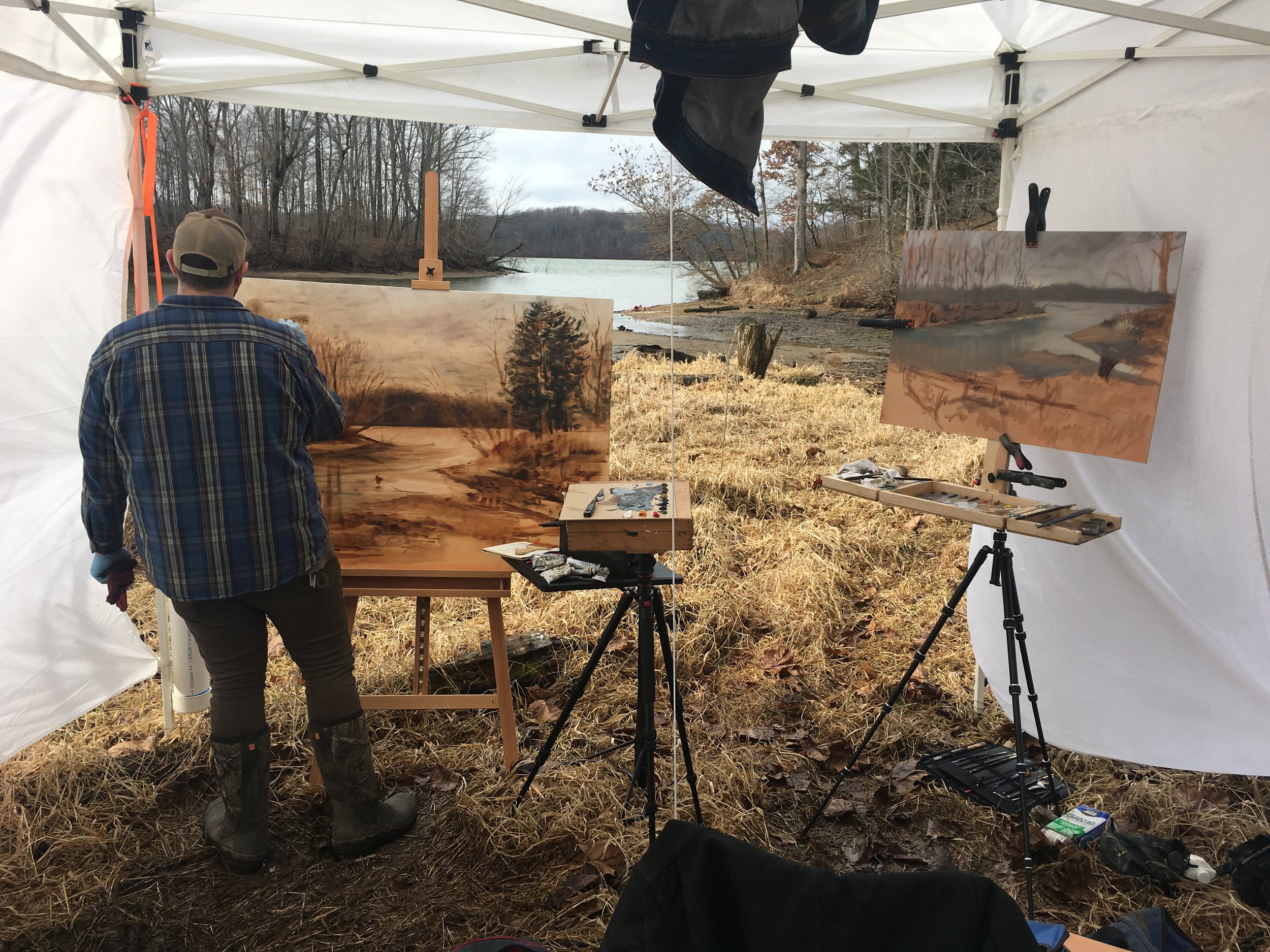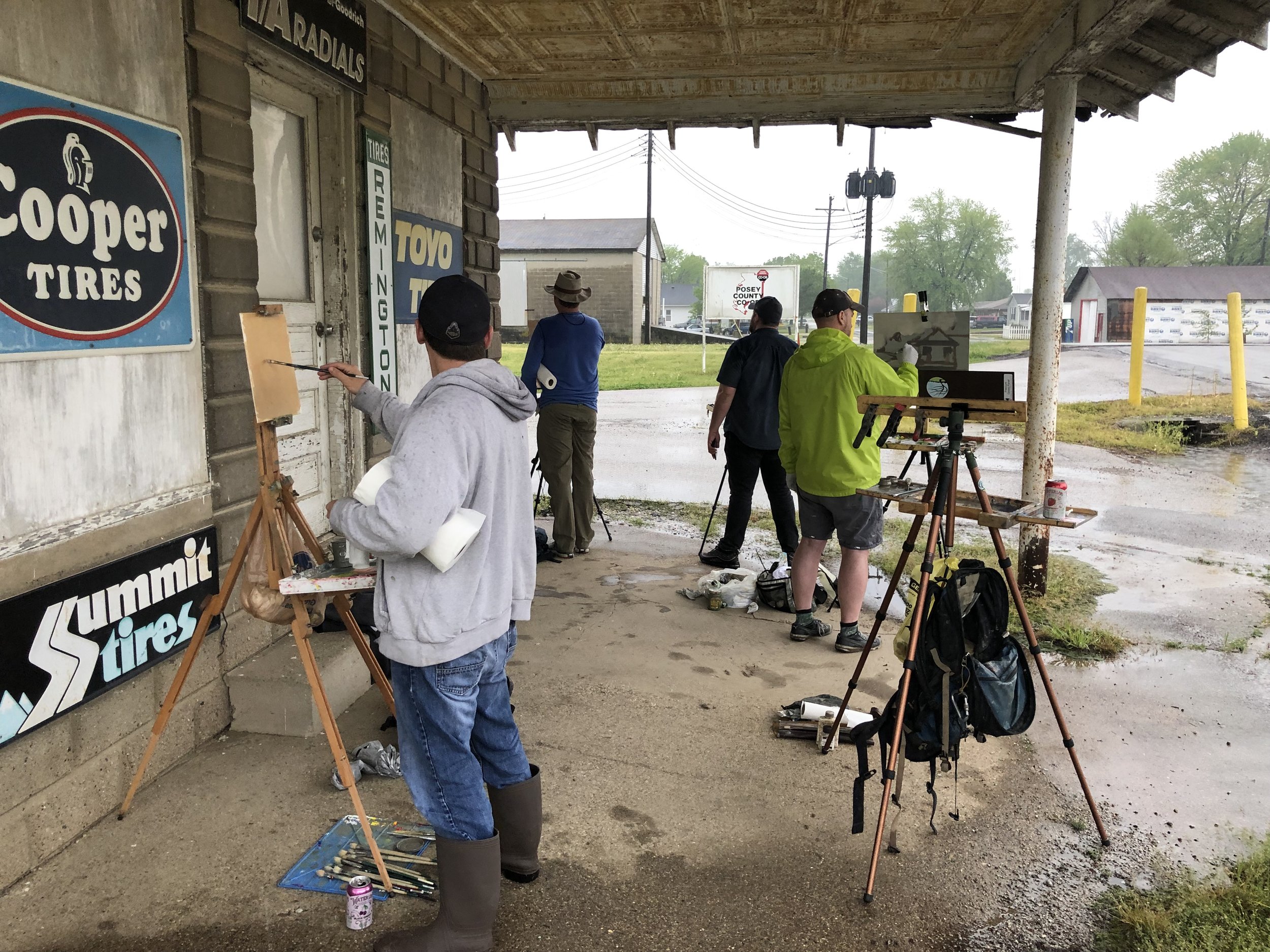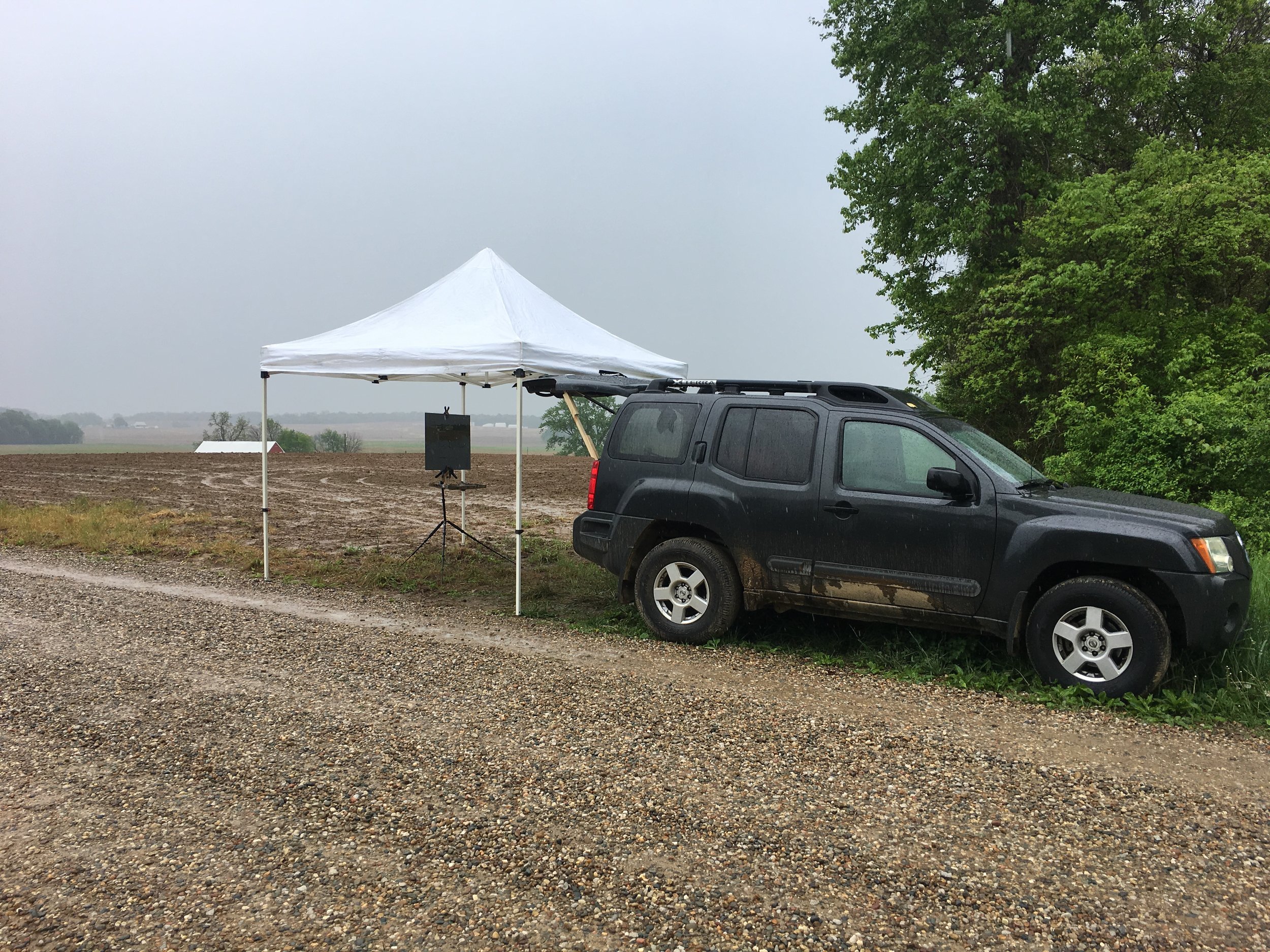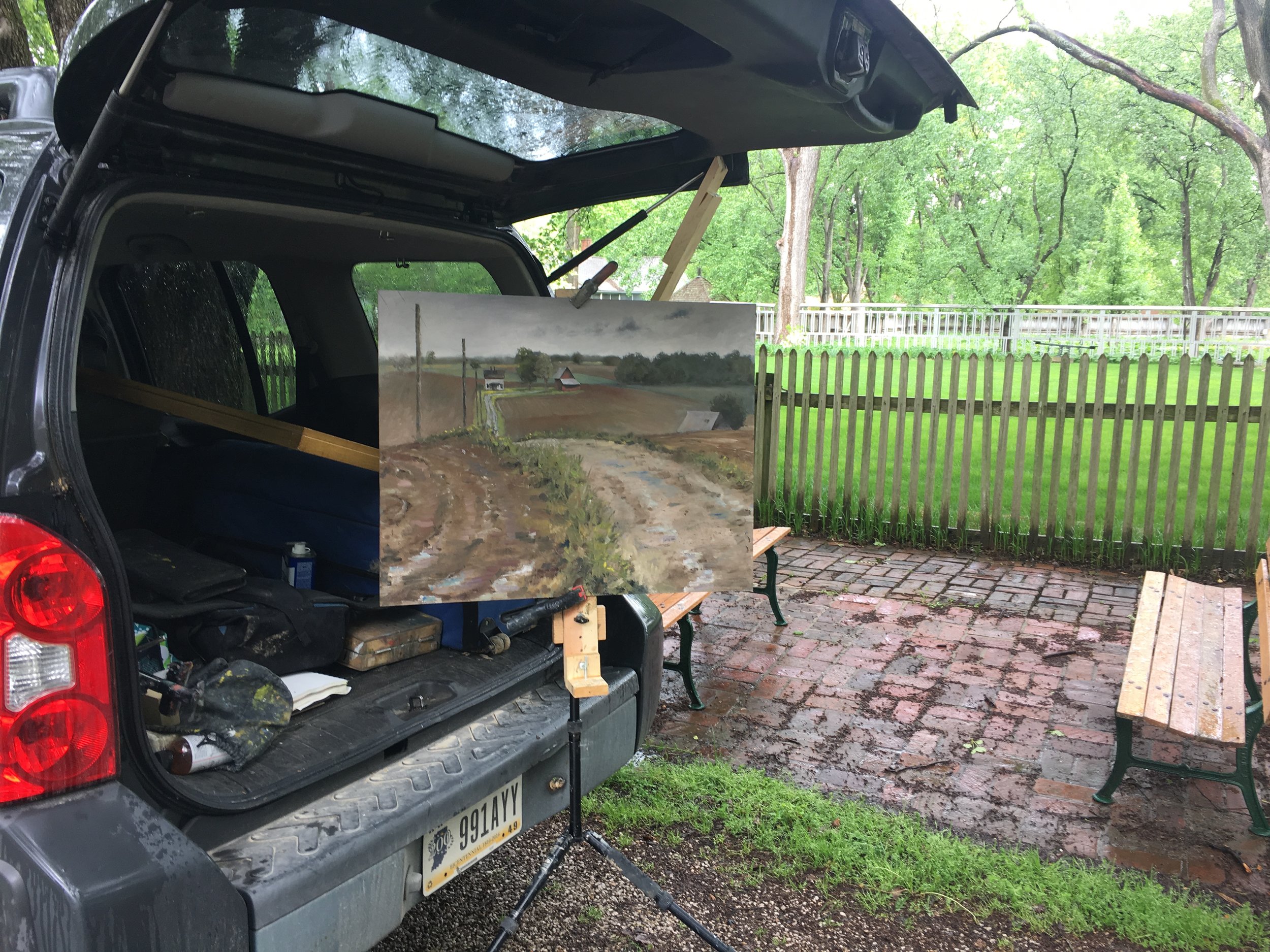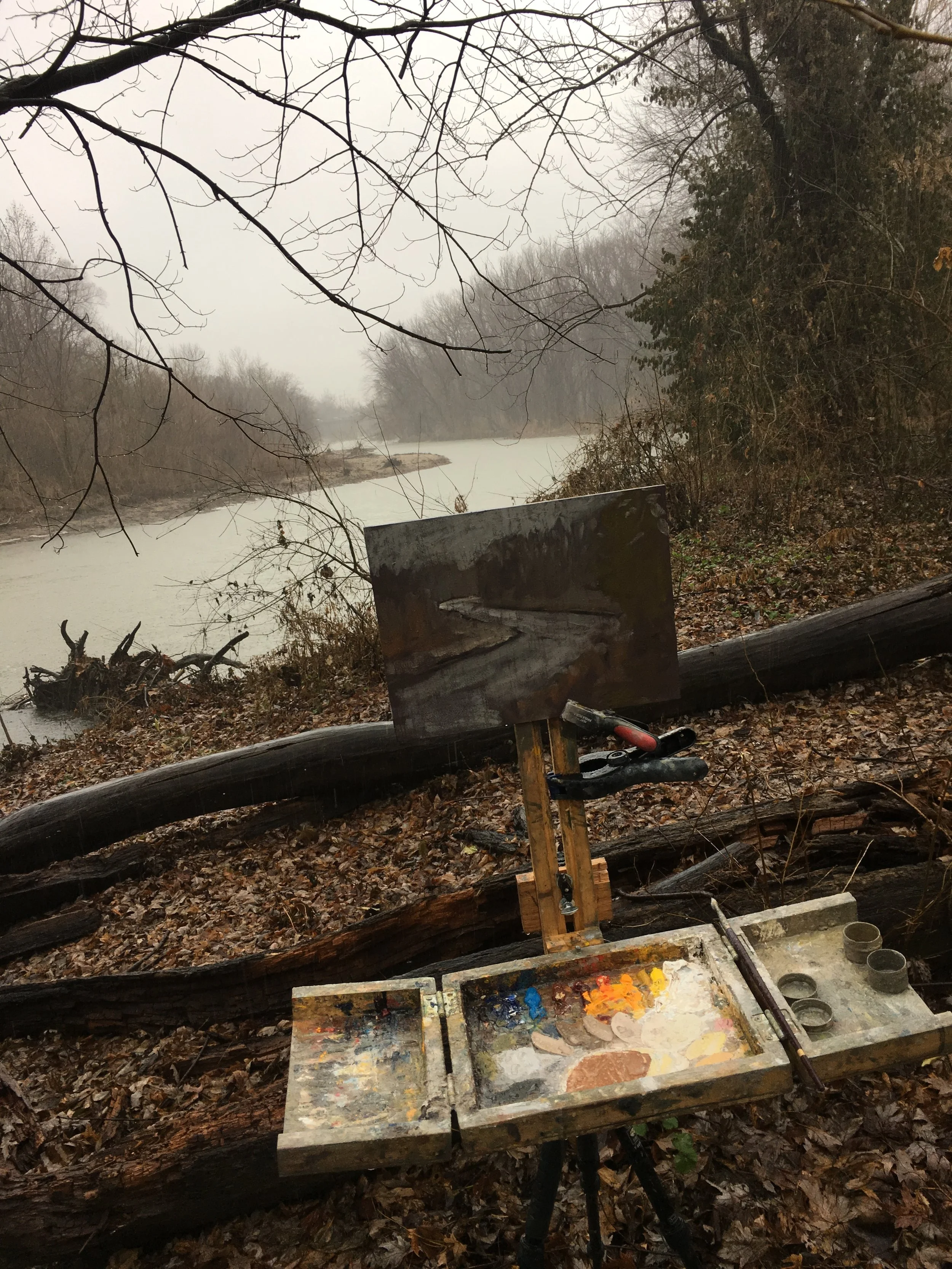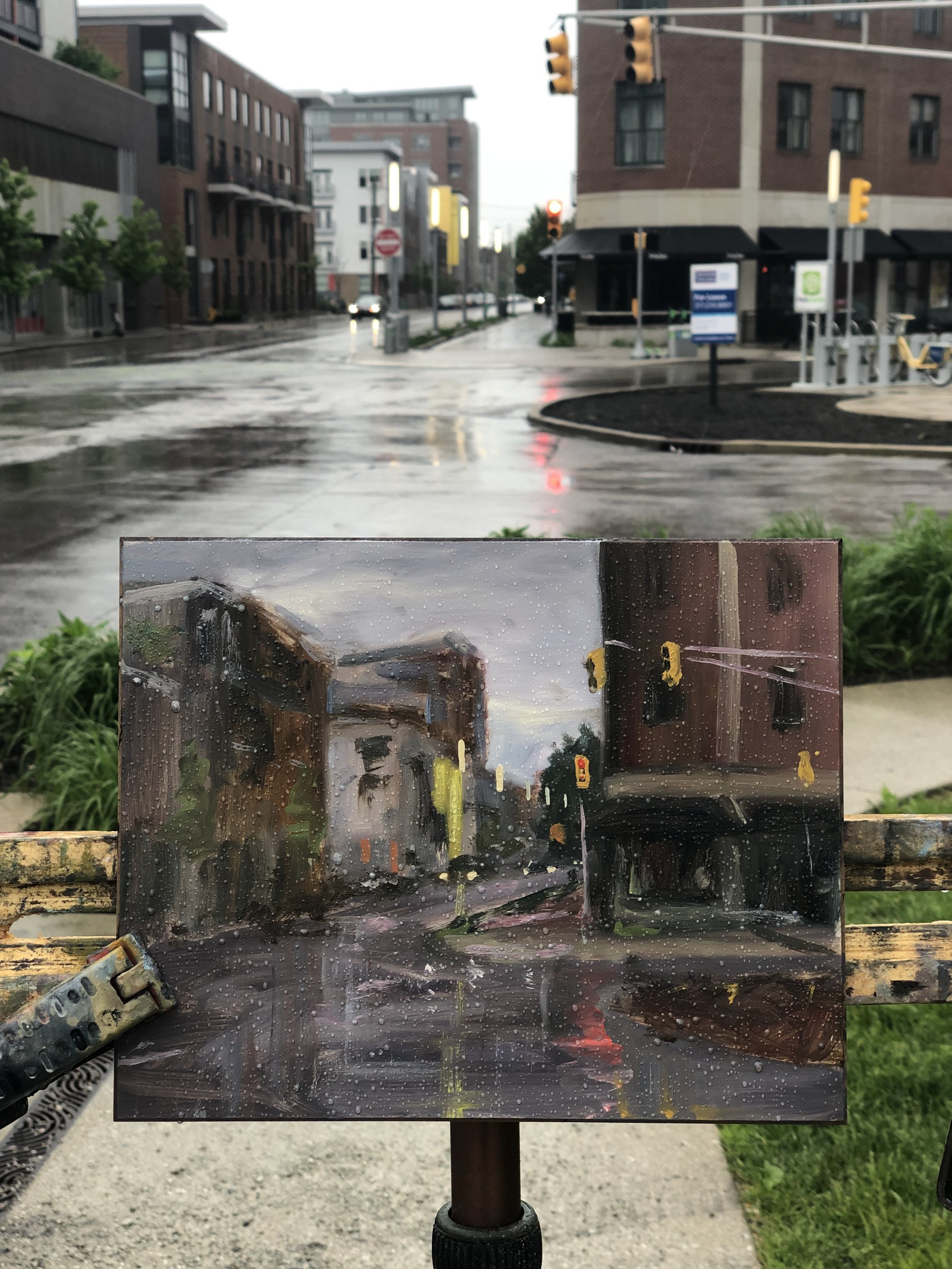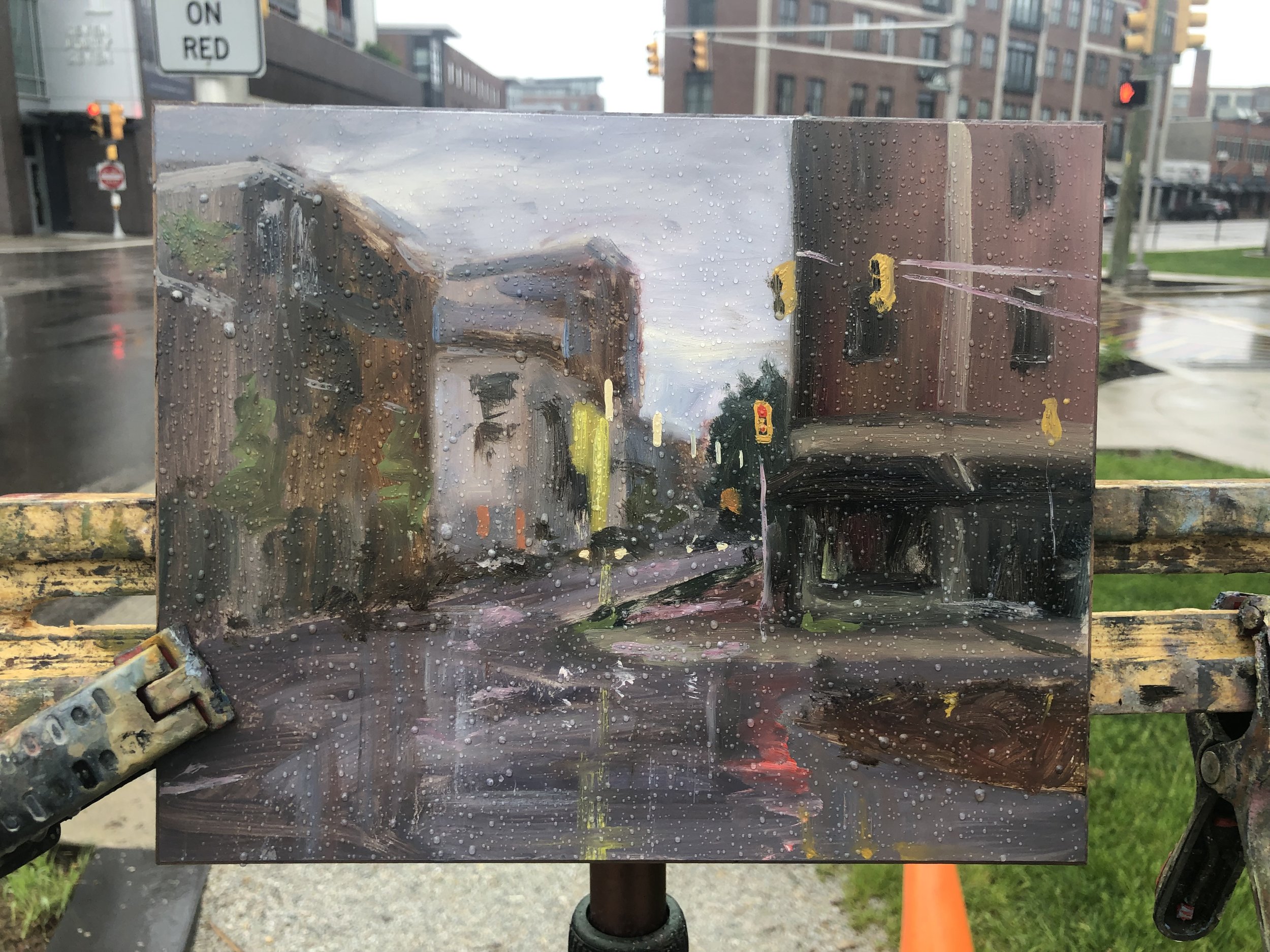Justin Vining: Tips for Painting in the Rain
Whether intentionally going out in the rain, or whether the rain comes out of nowhere, any seasoned plein air painter is going to have their share of rain stories. Here are some tips to help prepare you for the next time you find yourself in the rain.
Knowingly going out in the rain:
Shelter
I keep mental notes on where all the business awnings, park pavilions, underpasses, bridges, anywhere where I can setup in the rain with a good view and stay dry. I was recently at a super rainy paint-out and my friend Roy had an awesome spot scouted underneath an old gas station awning.
Pop up Tent
Sometimes the view you want in the rain has no shelter. I can think of many times, my friend Benny and I have lugged a big 10’x10’ pop up tent around so we could paint in the rain.
SUV Hatch
I cannot tell you how many times I have seen other painters tucked neatly & protected from the rain underneath their back hatch. In fact, recently it was raining so hard I found myself sitting inside my vehicle with the easel pulled all the way toward my back bumper so I could stay dry.
When the rain sneaks up:
Rain Coat
I keep a very simple, small, thin poncho in my pack and I haven’t actually used it in years. I also keep a nicer “painting” rain coat in my vehicle and nowadays use this as my primary option.
Move
On many occasions I have found myself in the middle of a painting and the rain comes. I don’t want to stop painting so I will seek shelter as close by as I can to finish. Moving is obviously not ideal, but in my opinion its better than not painting.
Just get wet
This happens too, if its not raining very hard, I have just stayed and finished my painting. I can think of twice recently where this has happened!
Actually painting in wet conditions:
Keep substrate dry
Oil paint will not adhere well to a wet substrate. When it starts raining, I immediately adjust my panel so it is no longer perpendicular to the ground, rather, I lean it in towards me so the rain will hit the back of the panel instead of the front. This does tend to make it more difficult to see actually color and value, but I can at least keep painting.
If substrate gets wet
If it happens, I paint thicker and paint right through the wet substrate. When this happens, the brush strokes start to look almost like an extreme scumbling. This can certainly make for interesting effects, but when this starts to happen on every brush stroke it’s probably time to call it quits. When you paint thin in areas that were wet, the paint will not adhere. I have even had paintings where you could see the rain drop patterns in the finished piece.
Keep your palette dry
I could mount my old palette vertically and that would help. My new one is a water trap. In a light rain I can use paper towel to manage the water, but when it starts raining harder mixing color becomes very difficult. It feels “sticky” while simultaneously the paint will no longer adhere to the glass mixing surface. Thus, I start using thicker paint, but once it gets so much moisture in it, it starts looking, feeling, and mixing more like a cottage cheese. When this happens, its probably also time to call it quits or find shelter.
How the painting dries
Finally, something (that I personally love, but you may not) I think you should be aware of. If you leave the water beads to dry on your painting as the oil paint cures, every drop will leave a little round mark, evidencing that it was painted in the rain. Some artists may find this super distracting, but I personally love that it shows that the piece was actually created in the rain.
Detail shot of the dried rain drops effect in an oil painting
About Justin Vining
Justin Vining is an Indianapolis-based artist, specializing and landscapes and cityscapes. Justin studied Art Education at Purdue University and taught elementary art for three years. Following his tenure as a teacher, Justin attended Valparaiso Law school, where he rekindled his love for creating between classes and clerking. Shortly after graduating and passing the bar in 2010, Justin decided to pursue art full time and hasn’t looked back since. See his work here.

